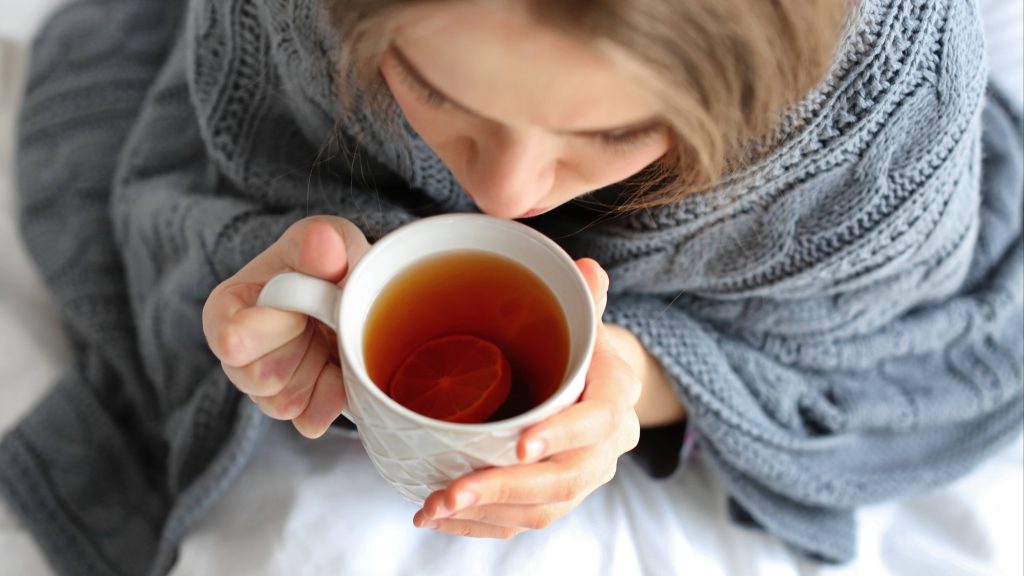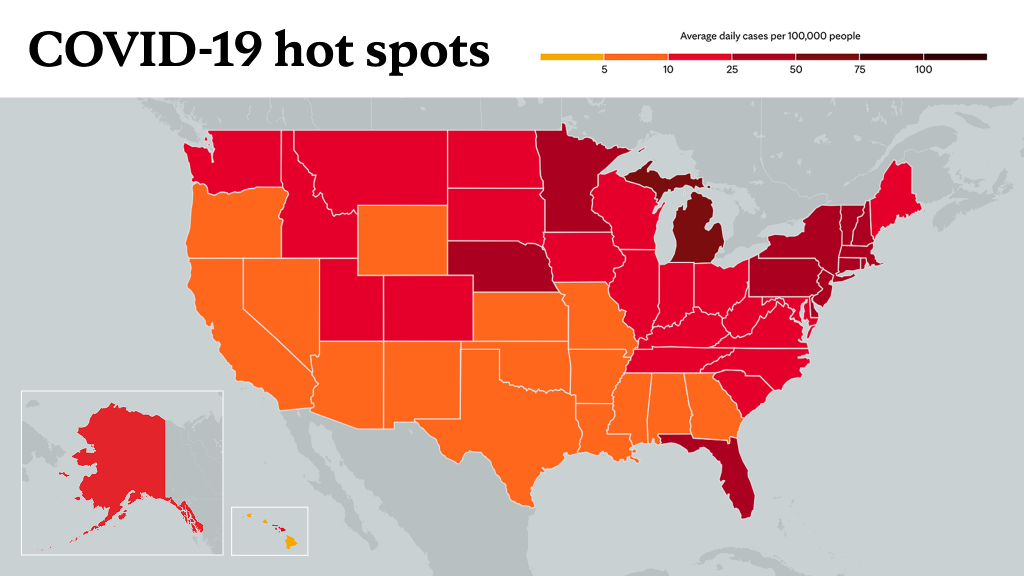
Providing care at home for a person sick with COVID-19? Or caring for yourself at home? Understand when emergency care is needed and what you can do to prevent the spread of infection.
This article is written by Mayo Clinic Staff.
______________________________________________________
If you have coronavirus disease 2019 (COVID-19) and you're caring for yourself at home or you're caring for a loved one with COVID-19 at home, you might have questions. How do you know when emergency care is needed? How long is isolation necessary? What can you do to prevent the spread of germs? How can you support a sick loved one and manage your stress? Here's what you need to know.
At-home treatment
Most people who become sick with COVID-19 will only experience mild illness and can recover at home. Symptoms might last a few days, and people who have the virus might feel better in about a week. Treatment is aimed at relieving symptoms and includes rest, fluid intake and pain relievers.
However, older adults and people of any age with existing medical conditions should call their health care provider as soon as symptoms start. These factors put people at greater risk of becoming seriously ill with COVID-19.
Follow the health care provider's recommendations about care and home isolation for yourself or your loved one. Talk to the health care provider if you have any questions about treatments. Help the sick person get groceries and any medications and, if needed, take care of his or her pet.
It's also important to consider how caring for a sick person might affect your health. If you are older or have an existing medical condition, such as heart or lung disease or diabetes, you may be at higher risk of serious illness with COVID-19. You might consider isolating yourself from the sick person and finding another person to provide care.
Emergency warning signs
Carefully monitor yourself or your loved one for worsening symptoms. If symptoms appear to be getting worse, call the health care provider.
The health care provider might recommend use of a home pulse oximeter, especially if the ill person has risk factors for severe illness with COVID-19 and COVID-19 symptoms. A pulse oximeter is a plastic clip that attaches to a finger. The device can help check breathing by measuring how much oxygen is in the blood. A reading of less than 92% might increase the need for hospitalization. If the health care provider recommends a pulse oximeter, make sure you understand how to use the device properly and when a reading should prompt a call to the provider.
If you or the person with COVID-19 experiences emergency warning signs, medical attention is needed immediately. Call 911 or your local emergency number if the sick person can't be woken up or you notice any emergency signs, including:
- Trouble breathing
- Persistent chest pain or pressure
- New confusion
- Bluish lips or face
- Inability to stay awake
- Pale, gray or blue-colored skin, lips or nail beds — depending on skin tone
Protecting others if you're ill
If you're ill with COVID-19, you can help prevent the spread of infection with the COVID-19 virus.
- Stay home from work, school and public areas unless it's to get medical care.
- Avoid using public transportation, ride-sharing services or taxis.
- Stay isolated in one room, away from your family and other people, as much as possible. This includes eating in your room. Open windows to keep air circulating. Use a separate bathroom, if possible.
- Avoid shared space in your home as much as possible. When using shared spaces, limit your movements. Keep your kitchen and other shared spaces well ventilated. Stay at least 6 feet (2 meters) away from your family members.
- Clean often-touched surfaces in your separate room and bathroom, such as doorknobs, light switches, electronics and counters, every day.
- Avoid sharing personal household items, such as dishes, towels, bedding and electronics.
- Wear a face mask when near others. Change the face mask each day.
- If wearing a face mask isn't possible, cover your mouth and nose with a tissue or elbow when coughing or sneezing. Afterward, throw away the tissue or wash the handkerchief.
- Frequently wash your hands with soap and water for at least 20 seconds, or use an alcohol-based hand sanitizer that contains at least 60% alcohol.
Protecting yourself while caring for someone with COVID-19
To protect yourself while caring for someone with COVID-19, the U.S. Centers for Disease Control and Prevention (CDC) and the World Health Organization (WHO) recommend:
- Keep your hands clean and away from your face. Frequently wash your hands with soap and water for at least 20 seconds, especially after being in close contact or in the same room as the sick person. If soap and water aren't available, use a hand sanitizer that contains at least 60% alcohol. Avoid touching your eyes, nose and mouth.
- Wear a face mask. If you need to be in the same room with the person who is ill and he or she isn't able to wear a face mask, wear a face mask. Stay at least 6 feet (2 meters) away from the ill person. Don't touch or handle your mask while you are using it. If your mask gets wet or dirty, replace it with a clean, dry mask. Throw away the used mask and wash your hands.
- Clean your home frequently. Every day, use household cleaning sprays or wipes to clean surfaces that are often touched, including counters, tabletops and doorknobs. Avoid cleaning the sick person's separate room and bathroom. Set aside bedding and utensils for the sick person only to use.
- Be careful with laundry. Don't shake dirty laundry. Use regular detergent to wash the sick person's laundry. Use the warmest setting you can. Wash your hands after putting clothes in the dryer. Thoroughly dry clothes. If you are handling clothing that has been soiled by the sick person, wear disposable gloves and keep the items away from your body. Wash your hands after removing the gloves. Place dirty gloves and masks in a waste bin with a lid in the sick person's room. Clean and disinfect clothes hampers and wash your hands afterward.
- Be careful with dishes. Wear gloves when handling dishes, cups or utensils used by the sick person. Wash the items with soap and hot water or in the dishwasher. Clean your hands after taking off the gloves or handling used items.
- Avoid direct contact with the sick person's bodily fluids. Wear disposable gloves and a face mask when providing oral and respiratory care and when handling stool, urine or other waste. Wash your hands before and after removing your gloves and mask. Don't reuse your mask or gloves.
- Avoid having unnecessary visitors in your home. Don't allow visitors until the sick person has completely recovered and has no signs or symptoms of COVID-19.
Ending isolation or quarantine
Talk to the health care provider about when to end home isolation, especially if you have a weakened immune system. The CDC recommends the following guidelines for ending home isolation after you think or know you had COVID-19.
- If you won't have a test to determine if you're still contagious, you can leave your sick room or home if at least 10 days have passed since your symptoms started, at least 24 hours have passed with no fever without the use of fever-reducing medicine and other symptoms are improving. Loss of taste and smell might last for weeks or months after recovery but shouldn't delay ending isolation.
- If you'll be tested to determine if you're still contagious, your doctor will let you know when you can be around others based on your test results. Most people don't need testing to decide when they can be around others.
The CDC also recommends that, as the sick person's caregiver, you quarantine for 14 days and watch for common signs and symptoms of COVID-19, such as fever, cough or shortness of breath. Other options may include ending quarantine after 10 days if you don't have symptoms and won't get tested or ending quarantine after 7 days if you receive a negative test result on day 5 or later. But continue to watch for symptoms for 14 days.
However, if you’ve been caring for someone with COVID-19, you don’t need to stay home if:
- You’ve been fully vaccinated and have no symptoms of COVID-19.
- You’ve had COVID-19 within the last three months, recovered and remain without symptoms of COVID-19.
Coping with caregiving stress
As you or your loved one recover, seek emotional support. Stay connected to others through texts, phone calls or videoconferences. Share your concerns. Avoid too much COVID-19 news. Rest and focus on enjoyable activities, such as reading, watching movies or playing online games.
As you take care of a loved one who is ill with COVID-19, you might feel stressed too. You might worry about your health and the health of the sick person. This can affect your ability to eat, sleep and concentrate, as well as worsen chronic health problems. It may also increase your use of alcohol, tobacco or other drugs.
If you have a mental health condition, such as anxiety or depression, continue with your treatment. Contact your doctor or mental health professional if your condition worsens.
To care for yourself, follow these steps:
- Maintain a daily routine, including showering and getting dressed.
- Take breaks from COVID-19 news, including social media.
- Eat healthy meals and stay hydrated.
- Exercise.
- Get plenty of sleep.
- Avoid excessive use of alcohol and tobacco.
- Stretching, breathe deeply or meditate.
- Focus on enjoyable activities.
- Connect with others and share how you are feeling.
Caring for yourself can help you cope with stress. It will also help you be able to support your loved one's recovery.
___________________________________________________
Information in this post was accurate at the time of its posting. Due to the fluid nature of the COVID-19 pandemic, scientific understanding, along with guidelines and recommendations, may have changed since the original publication date.
For more information and all your COVID-19 coverage, go to the Mayo Clinic News Network and mayoclinic.org.
Learn more about: Tracking COVID-19 and COVID-19 trends.








